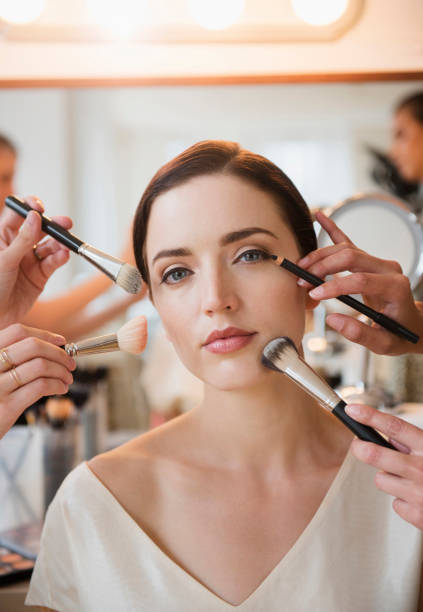Whether you’re a beginner makeup artist or looking to refresh your brand, a strong portfolio is essential. It’s your visual résumé—a way to show potential clients or employers what you’re capable of, from your technical skills to your unique style.

1. Start with your best work
Quality always trumps quantity. Choose photos that represent your range and skills—think bridal, editorial, glam, natural, or special effects, depending on your niche. Aim for at least 6–10 strong images to start with.
2. Use high-quality, professional photos
Crisp, well-lit, and professionally taken images will always elevate your work. If you can, collaborate with photographers and models to create styled shoots. If that’s not an option yet, use a good camera (even a phone with portrait mode can work) and natural lighting.
3. Work with models and creatives
To build variety, offer your services to local models, photographers, or stylists in exchange for portfolio images. These collaborations are often called TFP (Time For Print) shoots and can help you practise different looks while growing your network.
4. Show range—but stay consistent
Demonstrate that you can work on different skin tones, face shapes, and ages. Include a mix of beauty styles, but keep your editing, layout, and aesthetic consistent so your portfolio feels cohesive.
5. Consider before-and-after shots
Before-and-after photos help highlight your transformation skills. They’re especially useful for showcasing bridal or glam work. Just make sure they’re tastefully done, with consistent lighting and angles.
6. Create both digital and physical versions
A printed lookbook is great for in-person interviews, especially for fashion or agency work. But your online portfolio—whether on a personal website or social media like Instagram—is what most clients will see first.
7. Write short descriptions for each look
Add a short caption or description under each image. Mention the type of look, the skin type or tone, the occasion (e.g. bridal, editorial), or the products used. Keep it brief but informative.
8. Keep it updated
As you gain more experience, replace older work with new, stronger pieces. Your portfolio should grow with you, reflecting your current skills, style, and brand.
9. Use social media as a living portfolio
Instagram and TikTok are perfect for sharing both polished images and behind-the-scenes content. Use reels, tutorials, or transformation clips to give people insight into your process.
Building a makeup artist portfolio takes time, especially when you’re just starting out. But with creativity, collaboration, and consistency, you’ll have a polished collection of work that shows exactly why someone should hire you.



